Zimmerli Hosts Retrospective of Rutgers’ Former Printmaking and Papermaking Center
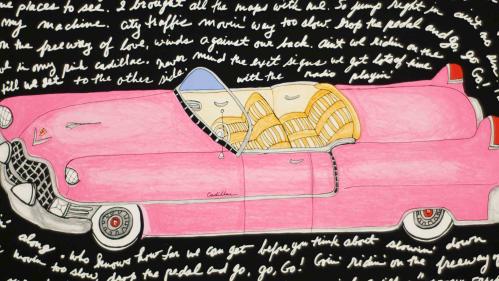
The Brodsky Center at Rutgers University: Three Decades, 1986-2017 runs from Sept. 13 through Dec. 22 at the New Brunswick art museum
The Zimmerli Art Museum’s main fall exhibition, The Brodsky Center at Rutgers University: Three Decades, 1986-2017, is focused on Rutgers University–New Brunswick’s former printmaking and papermaking center – and the artist who founded it.
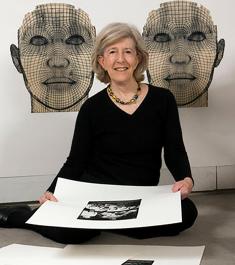
More than 40 years ago, Judith K. Brodsky established the Rutgers Center for Innovative Print. Then a professor at the Mason Gross School of the Arts, Brodsky envisioned the center as a model for institutional and art-world diversity, equity and inclusion. The center, which underwent a number of location and title changes, was named in her honor in 2006.
While the center at Rutgers shuttered in 2017 (with the Brodsky Center relocating to the Pennsylvania Academy of the Fine Arts in Philadelphia), the legacy of Brodsky, a Distinguished Professor Emerita in the Department of Art and Design at Mason Gross, and the center she founded lingers at Rutgers–New Brunswick.
The exhibition – organized by Ferris Olin, a Distinguished Professor Emerita of Rutgers – will be held from Wednesday, Sept. 13, to Friday, Dec. 22, in the Voorhees Gallery at the Zimmerli, 71 Hamilton St., New Brunswick. A museumwide opening reception is set from 5 p.m. to 8 p.m. on Sept. 13. Admission is free.
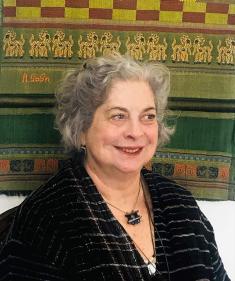
“The Zimmerli is incredibly proud to present this exhibition in our fall season line-up as it aligns with our aim to support underrepresented artists and highlight notable Rutgers initiatives,” said Maura Reilly, director of the art museum. “We are particularly thrilled to work closely with the visionary founder Judith K. Brodsky and curator Dr. Ferris Olin.”
In conjunction with the Brodsky Center retrospective, the Zimmerli is hosting Judith K. Brodsky: Inside and Outside, a collection of wall-sized color drawings by Brodsky based on photographs the artist took of herself during the pandemic lockdown. The exhibition, organized by Reilly, runs from Sept. 13 to Dec. 22 in the Lilien Gallery.
What compelled you to establish a center focused on printmaking and papermaking?
Brodsky: In 1986, I resigned from the position of associate provost of the Rutgers–Newark campus to return to making art and teaching at Mason Gross. I was well acquainted with the university's systems and decided to use that knowledge to provide opportunities for women-identifying artists and artists of color to experience printmaking with the goal of helping to diversity the art world which at the time was white and male.
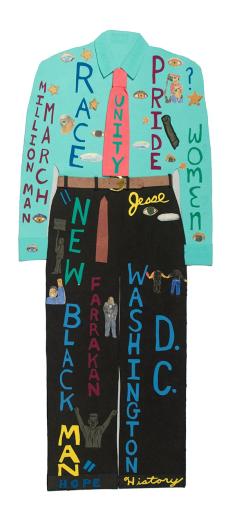
Decades ago, you recognized that women, people of color and gender nonconforming artists typically were excluded from the art world. How did the center try to change that?
Brodsky: I became involved in diversity in the 1970s as one of the founders of the American feminist art movement, formed to overcome the systemic discrimination against women in the visual arts. The center not only provided opportunities for women and artists of color to make new work in printmaking, it marketed the prints to museums and collectors. Often the acquisition of a print created at the Brodsky Center was the first acquisition of a work by a living woman artist or a living artist of color for a museum's collection.
Over the three decades the center was at Rutgers, 60 percent of the artists in residence were women-identified and 40 percent were artists of color during an era when galleries, museums and critics ignored and denigrated art created by women and artists of color.
What made the Brodsky Center significant in the art world – regionally, nationally and internationally?
Olin: Judith K. Brodsky’s vision and goals for the center were a precursor to recent American museums’ diversity, equity and inclusion initiatives and revamped institutional goals. During its three decades at the university, the center made visible works by global, national and regional artists, many of whom were from under-represented populations in the art world and many of whom had never worked in the media of print- and papermaking.
Additionally, the milieu in the center, where Rutgers visual arts students worked side-by-side with professional artists, meant that those emerging artists gained valuable experiences that set them on their life-long path towards successful visual arts careers.
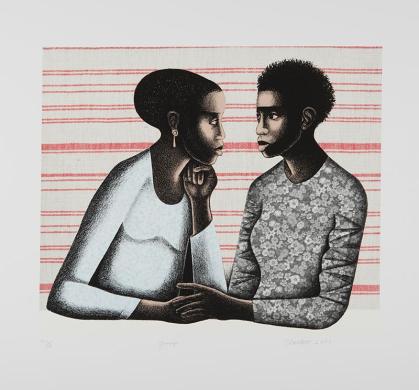
What are some takeaways you hope visitors gain from the exhibition?
Brodsky: Delight with the variety and wonder of prints and hand papermaking. Recognition of the creativity of women artists and artists of color. Recognition of printmaking as an art discipline on the same level as painting and sculpture. Learning about cultural narratives of women and artists of color.
Olin: Admiration for the variety of expressive vocabularies and innovative creations produced by the artists and their collaborating print- and papermakers. Recognition that works on paper can be beautiful, while simultaneously inspire thoughtful discussion related to the aesthetic and intellectual content expressed.




